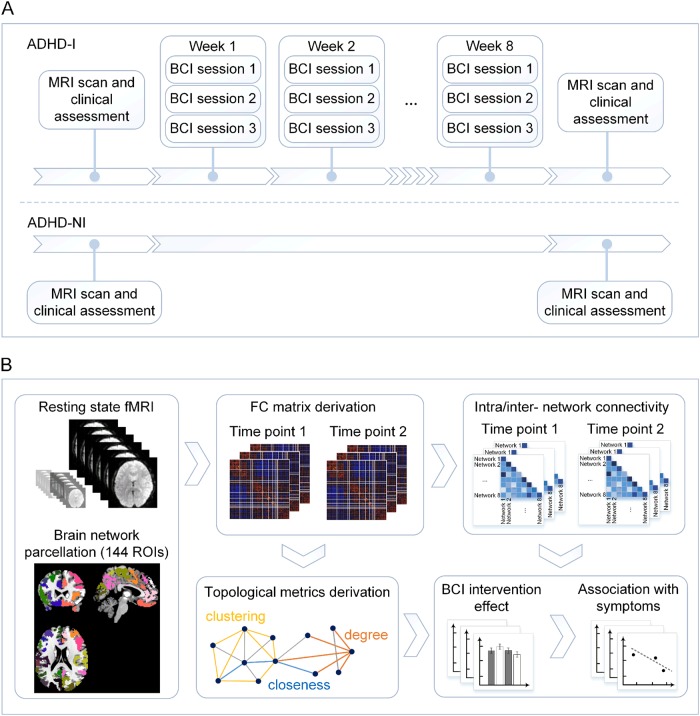Fig. 1. Study design schematic diagram.
a Participants were randomly divided into two groups: intervention group (ADHD-I) and non-intervention group (ADHD-NI). All participants underwent resting-state functional magnetic resonance imaging (RS-fMRI) and neuropsychological assessments at baseline and follow-ups. Between the two visits, participants in ADHD-I group underwent a brain-computer-interface (BCI)-based attention game training (three sessions per week for 8 weeks). b The functional connectivity (FC) matrix among 141 regions of interest (ROIs) covering the whole brain was derived for each participant at each time point. Intra- and inter-network FC measures were calculated. The FC matrix was then thresholded to a sparse weighted network to derive network topological measures. These FC metrics were then used to examine the effect of the BCI-based intervention on brain networks and brain-behavioral associations

